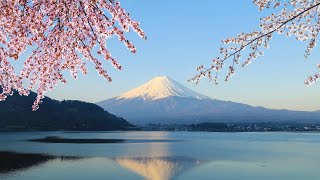Friday, 26 December, 2025г.
















Где искать: по сайтам Запорожской области, статьи, видео ролики
пример: покупка автомобиля в Запорожье
Typhoon Trami Tokyo (2018)
Figured I’d upload this since I’m currently in the midst of it.
Please like, comment, and subscribe!
TWITTER:
https://www.twitter.com/pizzaboynizza
FACEBOOK:
https://www.facebook.com/justinnizza
iTUNES:
https://itunes.apple.com/us/artist/justin-nizza/id901925263
BLOG:
https://pizzaboynizza.wordpress.com
INSTAGRAM:
pizzaboynizza
VIDEO GAME (When Imaginary)
https://pizzaboynizza.itch.io/when-imaginary
Copyright Disclaimer, Under Section 107 of the Copyright Act 1976, allowance is made for 'fair use' for purposes such as criticism, comment, news reporting, teaching, scholarship, and research. Fair use is a use permitted by copyright statute that might otherwise be infringing. Non-profit, educational or personal use tips the balance in favor of fair use.
Japan (Japanese: 日本; Nippon [ɲippoɴ] or Nihon [ɲihoɴ]; formally 日本国 About this soundNippon-koku or Nihon-koku, lit. 'State of Japan') is an island country in East Asia. Located in the Pacific Ocean, it lies off the eastern coast of the Asian continent and stretches from the Sea of Okhotsk in the north to the East China Sea and the Philippine Sea in the south.
The kanji that make up Japan's name mean 'sun origin', and it is often called the "Land of the Rising Sun". Japan is a stratovolcanic archipelago consisting of about 6,852 islands. The four largest are Honshu, Hokkaido, Kyushu, and Shikoku, which make up about ninety-seven percent of Japan's land area and often are referred to as home islands. The country is divided into 47 prefectures in eight regions, with Hokkaido being the northernmost prefecture and Okinawa being the southernmost one. Japan is the 2nd most populous island country. The population of 127 million is the world's eleventh largest, of which 98.5% are ethnic Japanese. 90.7% of people live in cities, while 9.3% live in the countryside.[16] About 13.8 million people live in Tokyo,[17] the capital of Japan. The Greater Tokyo Area is the most populous metropolitan area in the world with over 38 million people.[18]
Archaeological research indicates that Japan was inhabited as early as the Upper Paleolithic period. The first written mention of Japan is in Chinese history texts from the 1st century AD. Influence from other regions, mainly China, followed by periods of isolation, particularly from Western Europe, has characterized Japan's history.
From the 12th century until 1868, Japan was ruled by successive feudal military shōguns who ruled in the name of the Emperor. Japan entered into a long period of isolation in the early 17th century, which was ended in 1853 when a United States fleet pressured Japan to open to the West. After nearly two decades of internal conflict and insurrection, the Imperial Court regained its political power in 1868 through the help of several clans from Chōshū and Satsuma – and the Empire of Japan was established. In the late 19th and early 20th centuries, victories in the First Sino-Japanese War, the Russo-Japanese War and World War I allowed Japan to expand its empire during a period of increasing militarism. The Second Sino-Japanese War of 1937 expanded into part of World War II in 1941, which came to an end in 1945 following the Japanese surrender. Since adopting its revised constitution on May 3, 1947, during the occupation led by SCAP, the sovereign state of Japan has maintained a unitary parliamentary constitutional monarchy with an Emperor and an elected legislature called the National Diet.
Typhoon Trami, known in the Philippines as Typhoon Paeng, was the second typhoon to affect Japan within a month. The twenty-fourth tropical storm and tenth typhoon of the annual typhoon season, Trami developed from a low-pressure area southeast of Guam on September 20. It intensified into a tropical storm on the next day, and intensified into a typhoon on September 22. Trami steadily intensified and reached its peak intensity late on September 24. On the following day, Trami slowed down and drifting slowly northward. It began to weaken due to upwelling. Trami accelerated and turned northeastward on September 29, before it struck Japan on the next day, and became extratropical on October 1. The extratropical remnants persisted for days until dissipated completely on October 8.
Trami caused additional damage to Japan, while it still recovering from the impacts of Typhoon Jebi. Transportation was disrupted with several domestic flights were cancelled. Over 380,000 people were evacuated. In total, Trami killed 4 people and left hundreds of injures. Damage totals were estimated to have been at least US$1 billion (2018 USD).
Теги:
justin nizza pizzaboynizza #pizzaboynizza tokyo japan typhoon hurricane trami scary weather asia rain travel travels scary weather
Похожие видео
Мой аккаунт


 У вашего броузера проблема в совместимости с HTML5
У вашего броузера проблема в совместимости с HTML5


